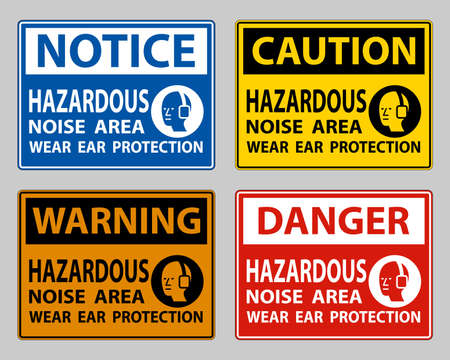1. Introduction to Venomous Exotic Pets
Keeping venomous exotic pets has become more popular in the U.S. over the past decade. These animals, which include snakes, spiders, lizards, and scorpions with venomous abilities, attract enthusiasts for many reasons. Some people are fascinated by their unique behaviors and striking appearances, while others enjoy the challenge of caring for such unusual creatures. However, owning these pets comes with serious responsibilities and risks that must not be overlooked.
Popular Venomous Exotic Pets in the U.S.
| Type | Common Species | Why People Keep Them |
|---|---|---|
| Snakes | Gaboon viper, Copperhead, Rattlesnake | Unique patterns, rare species, fascination with reptiles |
| Spiders | Brazilian wandering spider, Goliath birdeater (mildly venomous) | Exotic looks, interesting web behaviors, easy to house |
| Lizards | Gila monster, Beaded lizard | Colorful appearance, slow movement, rarity in captivity |
| Scorpions | Deathstalker, Emperor scorpion (less venomous) | Low maintenance, glowing under UV light, conversation starter |
The Appeal of Venomous Pets
Many owners are drawn to the excitement and sense of adventure that comes with keeping a dangerous animal. For some, it’s about learning more about wildlife and nature up close. Others enjoy being part of a unique community of hobbyists who share tips and experiences online or at reptile expos across the country.
The Responsibilities Involved
Owning venomous exotic pets is not like keeping a cat or dog. These animals require specialized enclosures to prevent escapes and protect both the pet and its owner. Owners must also stay informed about legal regulations in their state or city since some areas restrict or ban certain species. Proper training and an understanding of first aid procedures in case of accidental bites or stings are crucial parts of responsible ownership. It is also important to consider the welfare of the animal—venomous species need specific diets, temperature controls, and environmental enrichment to stay healthy.
2. Legal Considerations and Permits
Understanding State and Federal Laws
Before bringing home a venomous exotic pet, its essential to know that laws can vary greatly depending on where you live in the United States. Some states completely ban private ownership of venomous animals, while others allow it with strict rules. Even within a state, city or county regulations might be different. On the federal level, agencies like the U.S. Fish and Wildlife Service regulate certain species under laws such as the Lacey Act and Endangered Species Act. Breaking these laws can result in heavy fines or even criminal charges.
Examples of State Regulations
| State | Venomous Pet Ownership | Permit Required? |
|---|---|---|
| Florida | Allowed with restrictions | Yes, special permit needed |
| California | Generally prohibited | No (most permits not issued) |
| Texas | Allowed for some species | Yes, depending on animal |
| New York | Banned in most cases | No (very limited exceptions) |
How to Get a Permit for Venomous Pets
If your state allows venomous pets, youll likely need to apply for a permit. This process usually involves:
- Filling out an application with your local or state wildlife agency.
- Demonstrating knowledge about the animal and its care requirements.
- Proving you have proper enclosures and safety protocols in place.
- Paying a fee and possibly passing an inspection of your home or facility.
- Renewing your permit regularly and following any reporting requirements.
The Importance of Ethical Considerations
Beyond just following the law, responsible ownership of venomous pets means thinking carefully about safety and animal welfare. Ask yourself if you have enough experience and resources to care for such an animal. Always consider how your pet may affect neighbors, emergency responders, and local wildlife. Ethical owners are transparent about what they own and take every step to prevent escapes or accidents.

3. Safe Enclosure Design and Maintenance
When it comes to handling venomous exotic pets, having a secure and well-maintained enclosure is absolutely essential for the safety of both your pet and everyone around. Here’s how you can set up and maintain enclosures to prevent accidental escapes or exposure:
Guidelines for Secure Housing
- Escape-Proof Enclosures: Choose tanks or cages specifically designed for venomous species. Lids should lock securely, and all openings (like feeding ports) must close tightly.
- Sturdy Materials: Use thick glass, acrylic, or heavy-duty plastics. Avoid mesh tops unless they are reinforced and escape-proof.
- Double Door Systems: If possible, use an extra “safety door” or keep the enclosure inside a locked room for added security.
Enclosure Security Checklist
| Feature | Why It Matters |
|---|---|
| Locking Lids/Doors | Prevents accidental opening by pets or people |
| No Gaps or Holes | Keeps even small pets from escaping |
| Secondary Containment (Room/Box) | Adds another layer of safety in case of escapes |
| Tamper-Proof Design | Keeps children and unauthorized persons out |
Proper Ventilation
- Adequate Airflow: Make sure your enclosure has enough ventilation to keep the air fresh, but without creating openings large enough for your pet to escape.
- Safe Placement: Keep enclosures away from direct sunlight, drafts, or areas with frequent temperature changes.
Labeling for Safety
- Clear Labels: Clearly label each enclosure with the species name and a warning such as “Danger: Venomous Animal.” This helps protect anyone who might enter your home or facility.
- Emergency Contacts: Place emergency contact information near enclosures in case of an incident.
Regular Cleaning Protocols
- Routine Cleaning: Establish a regular cleaning schedule to prevent buildup of waste and bacteria. Always use tools like tongs or hooks to avoid direct contact with the animal.
- PPE (Personal Protective Equipment): Wear gloves, goggles, and long sleeves when cleaning enclosures.
- Secure Handling During Cleaning: Make sure the animal is contained or temporarily relocated before cleaning to prevent accidental bites or stings.
- Sterilization: Disinfect surfaces and equipment regularly using reptile-safe cleaners.
Quick Cleaning Checklist
| Task | Frequency |
|---|---|
| Spot clean waste & uneaten food | Daily |
| Change water bowls/dishes | Daily |
| Sterilize surfaces & tools | Weekly/Bi-Weekly |
| Total enclosure clean-out & inspection | Monthly or as needed |
If you follow these guidelines for enclosure design and maintenance, youll greatly reduce the risk of escapes or exposure while keeping your venomous exotic pets healthy and secure.
4. Handling Procedures and Tools
Techniques for Safe Handling of Venomous Exotic Pets
When interacting with venomous exotic pets, using the right handling techniques is crucial for your safety and the animals well-being. Never attempt to handle these animals with bare hands or without proper training. Always remain calm, move slowly, and avoid sudden movements that could startle the animal.
Specialized Equipment for Handling Venomous Species
The right tools make a significant difference when dealing with venomous pets. Here’s a quick overview of some common equipment and their uses:
| Equipment | Purpose | Key Tips |
|---|---|---|
| Snake Hook | Lifting and guiding snakes safely without direct contact | Use a hook that matches the size and weight of your snake |
| Tongs | Safely moving or restraining reptiles like snakes and lizards | Select tongs with padded ends to prevent injury to the animal |
| Bite-Proof Gloves | Protecting hands from bites during necessary close contact | Ensure gloves fit snugly and are made from high-quality materials like Kevlar |
| Transport Tubes/Boxes | Temporary containment for cleaning enclosures or medical checks | Always secure the lid tightly before moving the container |
Proper Handling Steps
- Prepare Your Equipment: Lay out all necessary tools within reach before opening the enclosure.
- Observe the Animal: Watch for signs of stress or agitation; do not attempt handling if the pet appears defensive.
- Use Tools Correctly: Use hooks or tongs to gently guide or lift the animal. Avoid pinching or squeezing.
- Secure Environment: Make sure all doors and windows are closed to prevent escape during handling.
- Limit Handling Time: Keep interactions brief to reduce stress for both you and your pet.
When to Seek Professional Help
If you feel unsure about any aspect of handling a venomous exotic pet, its always best to consult with a local herpetologist or an experienced exotic animal veterinarian. Many communities in the U.S. have reptile clubs or online forums where you can connect with knowledgeable keepers for advice and demonstrations.
5. Emergency Preparedness and First Aid
Developing an Emergency Response Plan
When keeping venomous exotic pets, it’s crucial to have a clear emergency response plan in place. This plan should be easy for everyone in your household to understand and follow. Make sure to post emergency numbers, such as poison control and local hospitals, in visible places. If possible, inform your local hospital and animal control that you keep venomous pets at home, so they are aware in case of an incident.
What to Do in Case of Bites or Stings
If you or someone else is bitten or stung by a venomous pet, remain as calm as possible. Quick and calm action can make a big difference. Here are some steps you should follow:
| Action | Description |
|---|---|
| Move to Safety | Get away from the animal to prevent further bites or stings. |
| Limit Movement | Keep the affected limb still and below heart level if possible. |
| Call for Help | Dial 911 for severe symptoms or contact poison control (1-800-222-1222). |
| Remove Jewelry/Clothing | Take off tight items near the bite/sting area in case of swelling. |
| Avoid Home Remedies | Don’t try to suck out venom, cut the wound, or use ice packs unless told by medical professionals. |
| Document Details | If safe, take note of the animal species and time of incident—this helps medical staff provide proper treatment. |
First Aid Steps for Venomous Pet Incidents
- Bite or Sting Wounds: Wash the wound gently with soap and water if possible.
- Swelling or Pain: Keep the affected area immobilized and avoid using it.
- Dizziness or Breathing Issues: Call 911 immediately—these are signs of a serious reaction.
- Anaphylactic Reaction: Use an epinephrine auto-injector if available and seek emergency help right away.
When to Contact Poison Control or Local Hospitals
If you’re unsure about the severity of a bite or sting, it’s always safest to call poison control at 1-800-222-1222. For severe symptoms like trouble breathing, loss of consciousness, rapid swelling, or intense pain, call 911 or head straight to the nearest emergency room. Bringing information about your pet (like species name and care sheets) can help doctors treat you more effectively.
6. Education and Ongoing Training
When it comes to handling venomous exotic pets, education is not a one-time thing—its an ongoing journey. Staying up-to-date with the latest knowledge and techniques is essential for both your safety and the wellbeing of your pets. Continuous learning helps you stay aware of new risks, updated regulations, and advances in animal care.
Why Continuous Education Matters
Venomous animals can be unpredictable, and best practices are always evolving. By regularly updating your knowledge, you’ll be better equipped to handle emergencies, prevent accidents, and provide a safer environment for everyone in your home.
Recommended Resources for Exotic Pet Owners
| Resource Type | Description | Examples |
|---|---|---|
| Online Courses & Webinars | Learn at your own pace from experts on venomous species care and safety. | Coursera, Udemy, YouTube channels like Snake Discovery |
| Books & Publications | In-depth guides written by experienced herpetologists. | “The Venomous Reptiles of the Western Hemisphere” by Jonathan A. Campbell; “Keeping and Breeding Venomous Snakes” by Chris Mattison |
| Local Workshops & Classes | Hands-on training tailored to U.S. laws and local species. | Community college courses; regional reptile expos |
| Government Websites | Updates on state and federal regulations regarding exotic pets. | US Fish & Wildlife Service; CDC Exotic Pets page |
Connecting with Local Herpetology Societies and Communities
The U.S. has a vibrant network of herpetology societies and exotic pet communities where you can meet others who share your passion. These groups offer practical advice, mentorship opportunities, and alerts about legislative changes that could affect your pets. Joining a society or club also gives you access to exclusive training events, group buys for supplies, and emergency support from experienced keepers.
How to Find Groups Near You:
- Search online for “herpetology society” plus your city or state (e.g., “California Herpetological Society”)
- Ask at local reptile shops or veterinary clinics specializing in exotics
- Check social media platforms like Facebook or Reddit for active groups (e.g., r/Herpetology, local Facebook groups)
- Attend reptile shows or expos in your area to network in person

